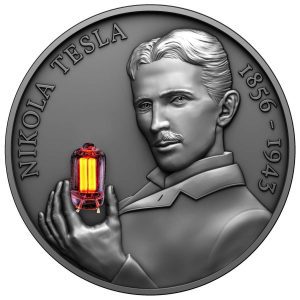Rose Gold is a gold alloy made by mixing it with copper and sometimes silver. It gets its unique pinkish hue from the addition of copper, while silver can be used to adjust the color to a lighter shade if desired. Moreover, 22K rose gold is highly desired for its unique blend of elegance and warmth.
Rose Gold Prices
Prices of rose gold may vary depending on the purity of gold. 22K rose gold is the most prized among all its types, while 10K is the most affordable as it is not as pure as the other types of rose gold.
22k rose gold > 18k rose gold > 14k rose gold > 10k rose gold

Factors that affect the rose gold Cost Include:
- Current gold spot price
- Karat (10K, 14K, 18K, 22K)
- Quantity purchased
- Retailer
Rose Gold Color
Rose gold is a favorite color that’s a soft, pastel shade of red. It belongs to the Pastel Red family, with a warm and elegant look due to its high lightness and low saturation. Different sources might have slightly different hex codes for rose gold, like #ECC5C0, #B76E79, and #E0BFB8.
Types of Rose Gold
Rose gold has different types based on the composition but 18k and 14k rose gold are very common although 22k and 14k of rose Gold are also a type of it.
22k Rose Gold
22K rose gold is a fancy gold alloy that’s mostly made of pure gold (91.6%). Furthermore, it has a warm pinkish color because it also contains copper and silver, which are good for making jewelry. Despite being a bit softer than other gold types, 22K Rose Gold is also known as Crown Gold.
18k Rose Gold
18K rose gold typically consists of approximately 75% gold, 23% copper, 1.3% silver, and 0.7% zinc. These specific proportions create the distinctive and desirable hue of rose gold. 18K rose gold is softer and easier to scratch than 14K rose gold, which is why it is 50 to 150% more costly than 14K rose gold. Therefore, it is a popular choice for engagement rings, wedding bands, and fine jewelry because of its high level of purity and distinct color.
14k Rose Gold
14K rose gold is a popular choice for jewelry, such as bracelets, rings, and accessories, because it combines pure gold with copper to create a warm and rosy pink color. Significantly, the amount of copper in the mixture determines the intensity of the reddish hue. In conclusion, compared to higher karat gold options like 18K, 14K rose gold is known for its durability, beauty, and affordability.
14k Rose Gold composition
14K rose gold typically consists of approximately 58.3% gold, 38.3% copper, 2.1% silver, and 1.3% zinc. Consequently, a combination of metals creates the beautiful and distinctive hue of rose gold.
10k Rose Gold
The most affordable rose gold among all of the above types of Rose Gold is 10k Rose Gold. It is not as pure as other types of Rose Gold, due to the greater content of Copper, and made by mixing 41.7% pure gold with silver and copper. A common composition includes 20% silver and 38.3% copper. This blend gives it a lovely pinkish-red color.
18k rose gold vs 14k rose gold
| Attribute | 18K Rose Gold | 14K Rose Gold |
| Gold Content | 75% pure gold | 58.3% pure gold |
| Copper Content | Less copper, more pure gold | More copper, less pure gold |
| Color | Lighter pink, more peach-toned | Deeper pink, more copper-toned |
| Cost | More expensive due to higher gold content | Less expensive due to lower gold content |
| Hardness | Softer due to higher gold content | Harder due to higher copper content |
| Durability | Less durable due to softer nature | More expensive due to the higher gold content |
Properties of Rose Gold
Rose Gold is characterized by its color, composition, durability, popularity, rarity, and affordability that make it a desirable choice for individuals seeking a unique and stylish jewelry option.
Color
Rose gold is a distinctive color with a pinkish-red hue that is attributed to its copper content. Therefore, the exact shade of rose gold can range from a light, silvery pink to a deep, warm rose, depending on the ratio of gold to copper in the alloy.
Composition
Rose gold is created through an alloying process, where pure gold is mixed with copper and sometimes silver. For example, compositions of rose gold include:
18K rose gold: This composition consists of 75% gold, 20% copper, and 5% silver.
14K rose gold: This composition contains 58.3% gold and 41.7% other metals, mostly copper.
10K rose gold: This composition has 41.7% gold and 58.3% other metals, predominantly copper.
Durability
Rose gold is known for its durability, primarily due to the presence of copper. The copper content in rose gold makes it less prone to scratches and damage compared to yellow gold. In fact, 22K rose gold is not only beautiful but also durable due to its high gold content.
Hypoallergenic Considerations
It’s important to note that rose gold may not be hypoallergenic for individuals who are sensitive to copper. Since rose gold contains a higher percentage of copper compared to yellow or white gold, it can potentially cause allergic reactions in some people.
Popularity
It has experienced a surge in popularity in recent years, particularly for engagement rings and fashion jewelry in the UK and all over the world. Particularly, its romantic and contemporary appeal has made it a favored choice among individuals seeking a unique and stylish option. Additionally, 22K rose gold is a popular choice for engagement rings due to its romantic hue.
Rarity and Affordability
Rose gold, considered rarer than yellow or white gold, generally costs less than platinum. The scarcity of rose gold in comparison to other gold types can contribute to higher prices.
Rose Gold History
Rose gold is a trendy color that originated in late 19th-century Russia. Jeweler Carl Fabergé mixed yellow gold with copper to create its blush hue. Originally called “Russian gold,” it gained popularity in the 1920s, especially after Cartier featured it in their jewelry, like the iconic ‘Trinity Ring’ released in 1924.
Since 2015, rose gold has surged in popularity, boosted by Apple’s release of an iPhone in the shade. It’s also been embraced in fashion and design, with shades like “millennial pink” becoming prominent. Today, you can find rose gold everywhere, from kitchen appliances to cars.





